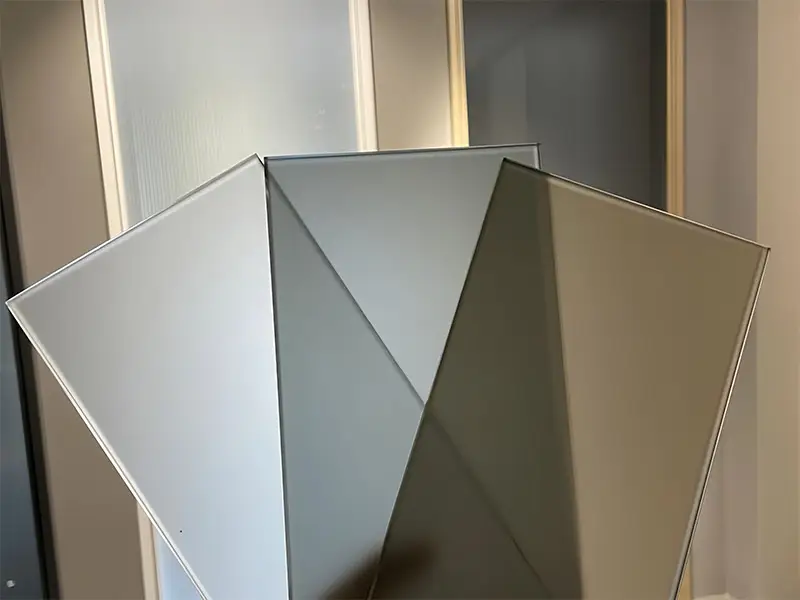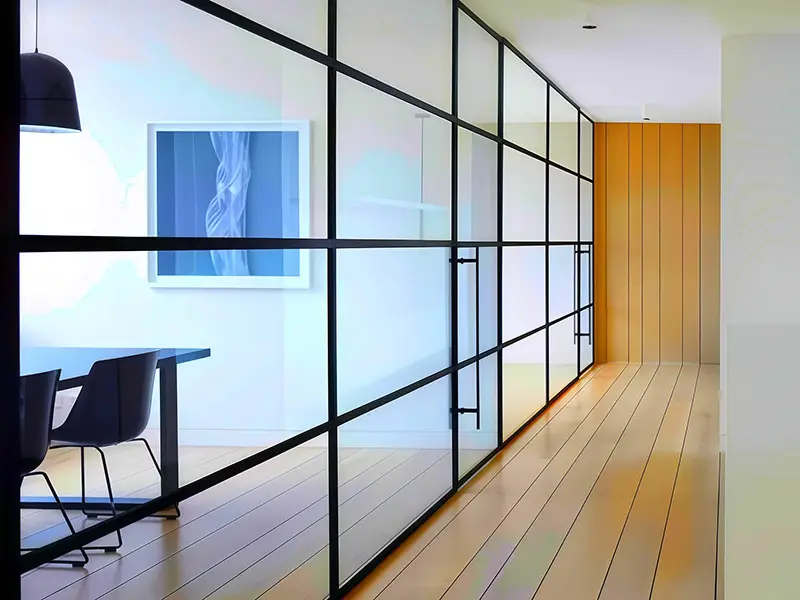








1、 Body colored glass (colored glass)
Definition and Principle
1. Adding metal oxides (such as cobalt, iron, copper ions) or colloidal particles (such as gold, cadmium selenide) to glass raw materials to selectively absorb/reflect specific wavelengths of light and present colors;
2. The color is stable, and the transmittance varies with the type of colorant (such as European gray, ocean blue, F green, etc.).
• Typical process
1. Ionic coloring: electron transition coloring of transition metal ions (such as cobalt ions → blue);
2. Colloidal coloring: gathering and scattering of light by precious metal atoms (such as gold red glass);
3. Semiconductor coloring: The light absorption characteristics of materials such as cadmium sulfide cause color changes.
• Application limitations
1. Low output (less than 10% of ordinary glass) and high cost;
2. Light staining can cause visual fatigue, and large-scale projects should be used with caution (color difference risk).
2、 Texture embossed glass (water ripple/colorful)
Water ripple glass
1. The dynamic ripple texture is formed by surface rolling, which produces a hazy wave effect when light passes through. It is commonly used for partition decoration;
2. Light transmittance of 70% -93.7%, combining privacy and artistic sense.
Colorful coated glass
1. Surface coating with nano metal oxide film layer (such as tin oxide, iron oxide), achieving dynamic gradient of orange, green, blue, etc. through optical interference;
2. The light transmittance is greater than 85%, and the composite tempering process can be used to improve safety.
3、 Scenario adaptation suggestions
|
Requirement |
Recommended type |
Advantages |
|
Exterior color of buildings |
Body colored glass (European Grey/Ocean Blue) |
Color stability and strong weather resistance |
|
Indoor Light and Shadow Art Effects |
Water ripple embossed glass |
Soften the light and create ripples of light and shadow |
|
Dynamic color changing decoration |
Colorful coated glass |
Perspective depends on color changes, with a strong sense of technology |
Summary:
(1) Color wave glass "may refer to bulk colored glass (static color) or water ripple/dazzling glass (dynamic light wave effect);
(2) The former achieves stable color through ion/colloid coloring, while the latter relies on texture or coating to produce fluctuating optical effects;
(3) The preferred colored glass for engineering needs to balance cost and color difference risk, and artistic design can explore the potential for light and shadow interaction of embossed/coated glass.









Various colored glass
Category:
GLASS ENCYCLOPEDIA
Can frosted glass be cleaned with wet wipes?
→ Okay! Recommend using glass cleaner and fish scale cloth to avoid scratching the matte layer with hard objects.
How to choose between single-sided frosted and double-sided frosted?
→Single sided frosted (smooth surface facing inward) is easier to clean; Double sided frosted provides stronger privacy.
Will frosted glass reduce light transmittance?
→ It will decrease by about 20% -40%, and the ultra white glass substrate can reduce the loss of light transmission.
What are the common glass products in daily life?
Get A Quote
We will contact you within one working day. Please pay attention to your email.
Related Products









